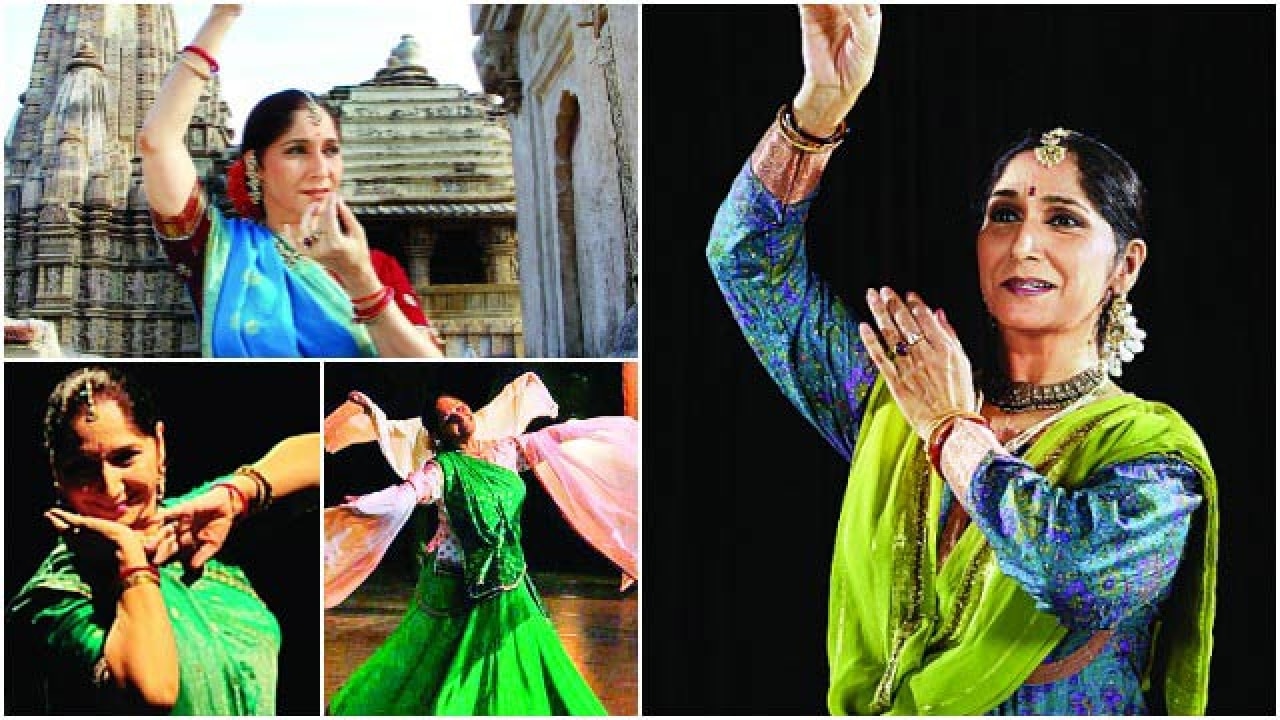
In the field of dance, especially in India, the idea of a guru has a very strong meaning. This is because he is the medium through which your innermost expression can find light. Your guru brings out your purest version of self. In Sanskrit, the word guru refers to a spiritual ignorance that is dispelled by radiant knowledge, and this is what my guru did for me. It’s a very powerful idea, to have one individual who polishes and fine-tunes your skills and shaped almost every aspect of your life with his knowledge and experience. A guru is different from a teacher. Students of dance move around all the time, spending a few years only in various schools. My guru didn’t just teach me dance, he shaped my life. The shahgird, or the disciple, by definition, moves around the king or the guru. When you surround him, you learn about the nuances of walking, talking, and how to behave on stage.
This is not a lesson which you can take notes for. It is so spontaneous and natural, and this is the beauty of it. As a shahgird, in some ways, you get answers to question you didn’t ask. When you are in trouble, you begin to think about what your guru would do if he were put into that situation. His life becomes your lesson. I started festival Raindrops to finish what he started. My guru, Pandit Durgalal, passed away when I was a young woman of 30. He had developed a strong, good human in me when he left. He was a friend — when we choreographed his work, he would never forget to ask for my opinion. He was a master — yet so humble. Another thing that was particularly important to me was how he enhanced aspects of me but never attempted to change me. He believed in improvement of strengths and never told me I was wrong.
A legend of the Jaipur Gharana, he had changed the game. A while ago, the Jaipur Gharana had become diluted by the Lucknow Gharana, but his work restored the sheen in the Jaipuri Kathak form in the 60s. Your guru is also a performer, and it is the duty of the shahgird to accompany him in trying to understand the nuances of the audience. Your whole life was a stage, and you were the performance, and this is a feeling he inculcated in all his students. There was always a sense of open-mindedness and sharing of points of view, which a quality of his I cherish to this day. This kind of freedom was empowering, and when my point of view matched his, experience of his years, with the freshness of mine, something very special always came out of it.
I was born in Delhi to a middle-class family. I had eight siblings. It wasn’t easy — the travel, the intensity of the lessons. Especially when I started college. Today art and culture has a place in society and academia, but in my time this was certainly not the case. Whether you’re in sports or arts, teachers support your co-curriculars and the college takes pride in your achievements. My principal and teachers used to be very annoyed by my absences. I clearly remember being detained as a third year student in Lady Shriram, Delhi while I was doing a tour of the them USSR. I was told that I did not have enough attendance to be allowed to take the exams. I cried a lot and it was very humiliating. I felt like no one understood what I was trying to achieve. The guru-shishya parampara requires the shishya to go to the gurujis home, everyday. If we did a good job, we were recommended for shows by our gurus. This is the role I have taken up now for my other pupils. If they’re happy, I’m happy.
While you can’t paint everyone with one brush, and there are students who very much respect their gurus and the art forms, there are some who don’t. I try and understand these students, and the reason why they experience art the way that they do. Today, everyone is trying to make ends meet. I have known many students who after two years, went forth to open their own schools and become teachers. 20 years down the line I did not feel the need to do this. Despite this change, I believe that the learning should never stop. It should be be a shadhana rather than a profession. 45 years down the line I still practice every day, because when I learn, I grow, and it adds to my work. Dance is a very spiritual journey. The goals of the guru are massive, and perhaps not achievable in one lifetime. It is the duty of the pupil to carry this forward. This is why it is called a parampara — it goes on. You must have faith in your guru. Ask questions, but never have any doubts.
The author is a Kathak dancer and guru